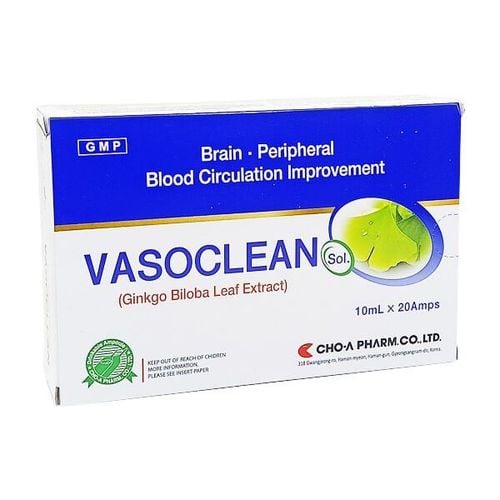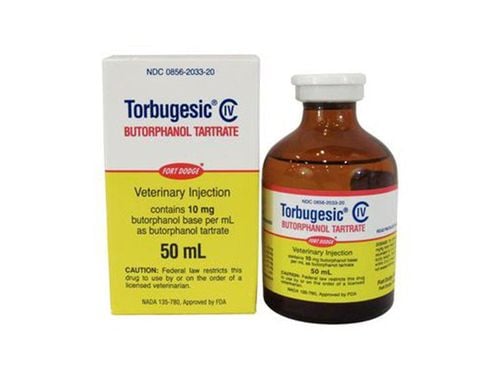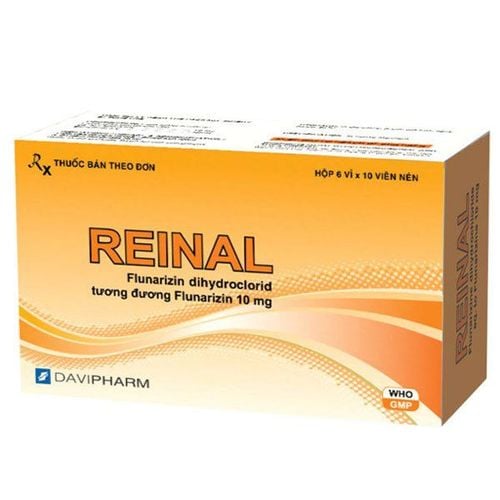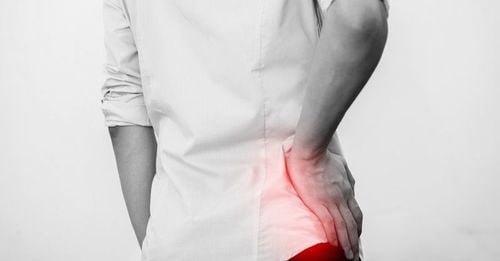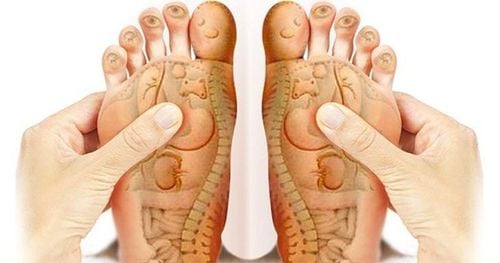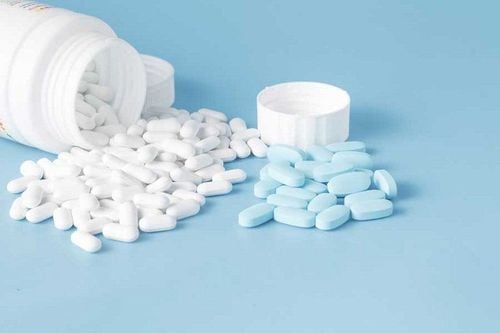This is an automatically translated article.
Cerebral circulatory insufficiency is a fairly common condition, which can occur in all subjects, but is especially common in people who often use their brains and the elderly. Currently, non-drug therapies are attracting much attention, including massage to treat cerebral circulatory insufficiency.1. What is cerebral circulatory insufficiency?
The brain is considered the most important organ of the human body. Therefore, the brain needs to be absolutely protected from various diseases, including cerebral circulatory insufficiency.Cerebral circulatory insufficiency is another name for anemia to the brain. This disease occurs when the human brain is suddenly deprived of blood supply, resulting in a lack of oxygen and nutrients necessary for the normal functioning of brain cells.
Consequences of cerebral circulatory insufficiency are impaired neurological functions, making brain activity limited. Cerebral circulatory insufficiency is common in middle-aged, elderly or people who often have to do mental work.
2. Causes of cerebral circulatory insufficiency
Cerebral circulatory insufficiency can result from a variety of mechanisms. In particular, some common causes that can lead to cerebral circulatory insufficiency include:Narrowing of cerebral arteries due to causes such as atherosclerosis, abnormalities/malformations of blood vessels... causes insufficient blood flow to the brain, causing symptoms of cerebral circulatory insufficiency. Improper nutrition also contributes to cerebral circulatory insufficiency. Patients often eat excessive amounts of substances, especially consuming foods high in fat. Habits of sedentary physical activity, not doing sports. Some unhealthy habits can cause cerebral circulatory insufficiency such as smoking, pipe tobacco, drinking alcohol...

Một số thói quen không lành mạnh có thể gây thiểu năng tuần hoàn não như hút thuốc lá, thuốc lào, uống rượu bia...
3. Symptoms of cerebral circulatory insufficiency
Pain or feeling of heaviness in the head: The nature of the pain is sudden, unspecified pain, variable intensity, sometimes intense pain, sometimes just a dull ache. Sleep disorders: Frequent insomnia, sleep not deep, easy to wake up suddenly at night, leading to sleepiness during the day, memory impairment. Some other less common symptoms such as: tinnitus, stress, fatigue, irritability, easily angered... Especially if the person has long-term cerebral circulatory insufficiency accompanied by neurological signs such as: Numbness, pain, loss of sensation, or severe paralysis of the limbs.4. Massage therapy for cerebral circulatory insufficiency
Massage (also known as acupressure) is a non-drug treatment method that uses hands and fingers to act directly on parts of the body (such as skin, muscles, nerves, blood vessel).The effect of massage is to help change the endocrine factors in the body, restore nerve function and improve the functioning of the nervous system. In addition, massage also brings some of the following benefits:
Dilate blood vessels, increase circulation to nourish the organs. Thereby, helping the body to increase metabolism, increase oxygen for cell activity and eliminate waste products. Proper and regular massage creates a positive effect on nerve receptors, improving nerve reflexes. As a result, the nervous system is also more sensitive, reducing pressure and stress and increasing concentration. Through the positive effects on the circulatory system and the nervous system, doctors have applied massage methods to treat cerebral circulatory insufficiency effectively. The advantage of massage therapy for cerebral circulatory insufficiency is that it is easy to perform, can be performed at home, and has positive results.
Depending on the symptoms of the disease, there are different massage methods for cerebral circulatory insufficiency.
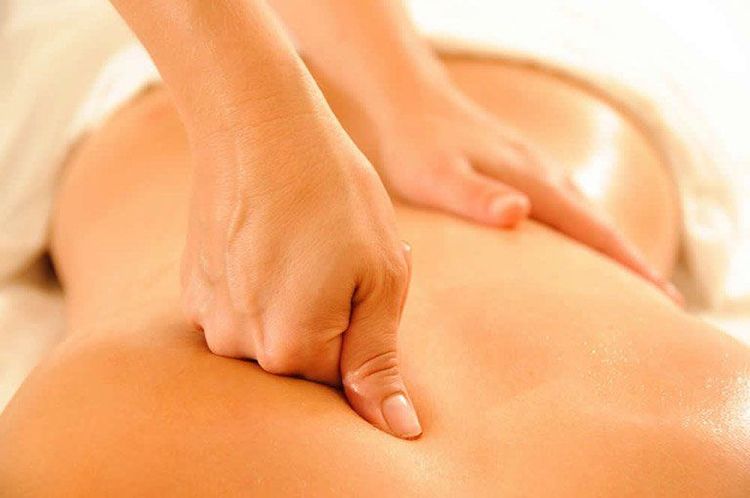
Thông qua các tác dụng tích cực lên hệ tuần hoàn và hệ thần kinh, các bác sĩ đã ứng dụng phương pháp xoa bóp chữa thiểu năng tuần hoàn não hiệu quả
5. Massage guide to treat cerebral circulatory insufficiency
Before conducting massage to treat cerebral circulatory insufficiency, the patient needs to identify the necessary acupuncture points during the procedure:Bach Hoi acupoint: Located about 7 inches from the hairline behind, at the midpoint of the seam. round two ear tips. Venous point: Located in the depression between the sternum - clavicle - mastoid muscle and the upper part of the trapezius muscle. Thai pulse point: Located between the toes 1 and 2, 2 inches from the edge of the skin. The nerve point: Located on the carpal column, posterior border of the iliac bone, at the concave point toward the rotation of the tendon of the anterior ulnar muscle. Tam Yin intersection: Located on the tip of the ankle in 3 inches, close behind the tibia. Internal organs: Located on the wrist line 2 inches, between the large tendons of the palmar muscle and the small tendon of the palmar muscle. Tam Ly acupuncture point: Located 1 finger from the tip of the tibia to the outside. 5.1 Method No. 1 Perform massage to treat cerebral circulatory insufficiency according to the following steps if the patient has pain or feeling of heaviness in the head, the pain location is usually the back of the neck
Use the palm of your hand to massage at a moderate speed in the area forehead about 5-10 times, then use fingertips to stroke backwards from forehead to back of neck 5-10 times, finally use the whole hand to rub strongly on the back of the neck about 10 times. For the best effect, it is recommended to combine massage with acupressure on the baihui and feng shui points for a period of 3 minutes, the patient breathes evenly. 5.2 Method No. 2 When the patient frequently has symptoms such as: Sleep disturbance, poor sleep, difficulty in maintaining sleep and memory impairment, or forgetfulness, massage therapy should be performed. cerebral circulatory insufficiency follow these steps:
Use your palms to massage the soles of your feet about 20-30 times. Combine pressing acupressure points such as internal organs and Shenmen points within 3 minutes. This massage method helps patients improve memory as well as improve sleep quality. 5.3 Method No. 3 This massage therapy for cerebral retardation is applied when the patient has symptoms of irritability or irritability...
Massage combined with acupressure at the location of the Thai pulse acupoint, the tam yin acupoint Delivered within 3 minutes It is recommended to massage and press acupressure points daily to regulate the body and bring the patient a more comfortable and pleasant state. 5.4 Method No. 4 When the patient has reduced working capacity and slow movement, massage can cure cerebral circulatory insufficiency in the following ways. The massage and acupressure in this position help the patient to resolve the clinical signs on their own.
Please dial HOTLINE for more information or register for an appointment HERE. Download MyVinmec app to make appointments faster and to manage your bookings easily.
SEE MOREHow to deal with neck pain? Can spinal stenosis be cured? 17 diseases effectively treated by Spinal Impact Method




